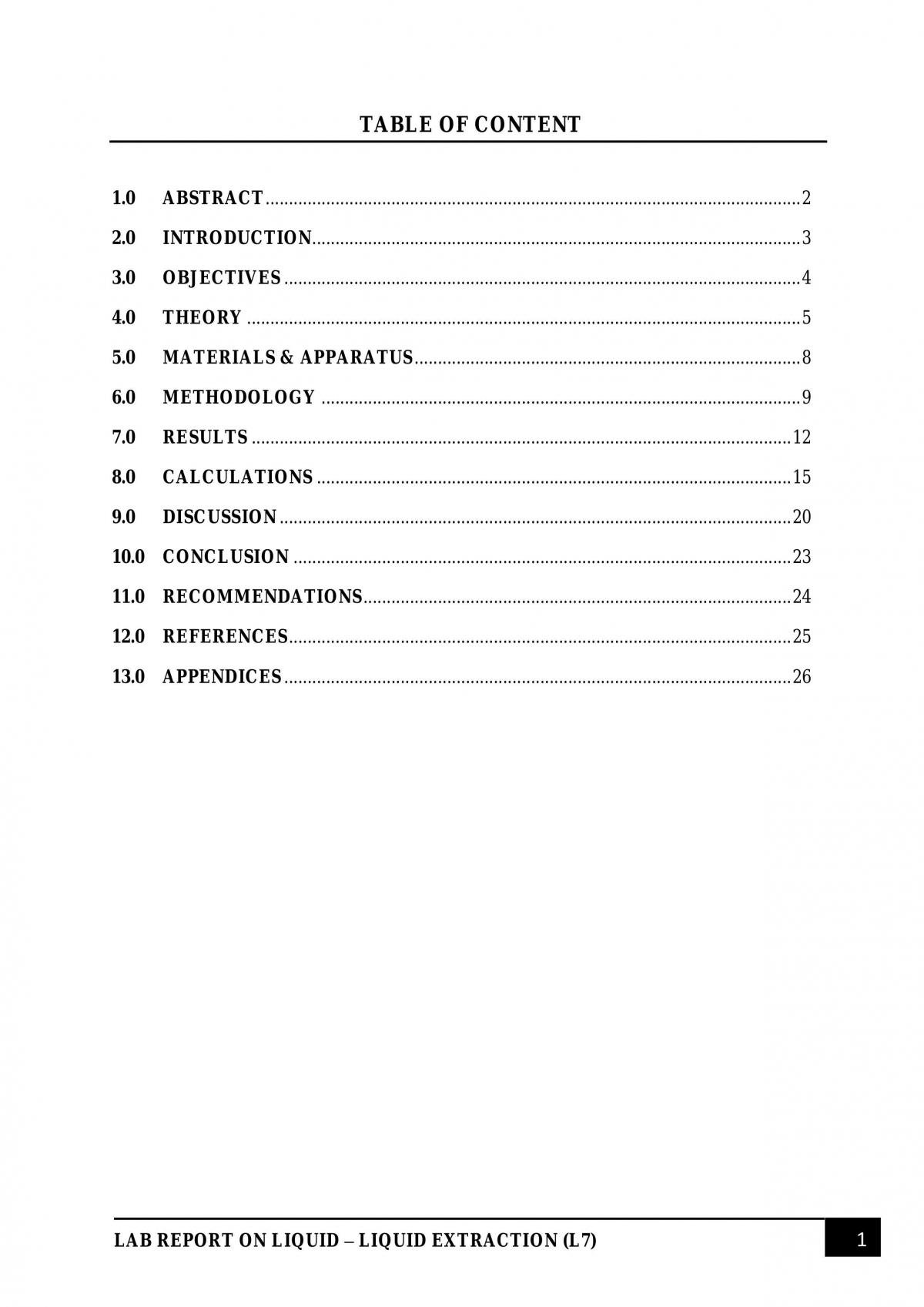Find
Search for over 200,000 study notes and past assignments!
Swap
Download study resources by swapping your own or buying Exchange Credits.
Study
Study from your library anywhere, anytime.
25 Pages • Essays / Projects • Year Uploaded: 2021
Liquid-liquid extraction is one of the separation technology used in industries. This process is quite different with distillation because it focuses on relative solubility of the species rather than volatility. Usually, extraction is more preferable than distillation for separation application that is not cost efficient and applicable for distillation. This experiment was carried out to determine the distribution coefficient and mass transfer coefficient of LLE. The sample collected from extraction equipment, namely raffinate, extract and feed were titrated with sodium hydroxide with different concentration. An indicator, phenolphthalein were added into the sample in order to detect alkaline ion. The sample is titrated until the solution turns light pink. The amount of 0.025M sodium hydroxide needed to turn the colourless feed, extract and raffinate solution to light pink were 253.8 mL, 52 mL and 4 mL respectively. While for 0.1M sodium hydroxide, the samples need 81.5 mL, 15.9 mL and 2.2 mL in the same order as mentioned previously. The mass transfer coefficients in 0.025M NaOH are 6.1402x10-3 m/min and 6.1632x10-3 m/min for K value 1.9272 and 1.8415 respectively. Meanwhile, for 0.1M NaOH, the mass transfer coefficients are 5.8451x10-3 m/min and 5.8620x10-3 m/min for K value 1.9272 and 1.8415 respectively. As the concentration of sodium hydroxide, NaOH solution and the distribution coefficient, K values increases, the mass transfer coefficient of propionic acid will decreases. The experiment is considered successful since all the objectives are successfully achieved. Turnitin : Percentage Similarity (18%)
This document is 10 Exchange Credits
More about this document:
|
|
This document has been hand checkedEvery document on Thinkswap has been carefully hand checked to make sure it's correctly described and categorised. No more browsing through piles of irrelevant study resources. |
|
|
This is an Essay / ProjectEssays / Projects are typically greater than 5 pages in length and are assessments that have been previously submitted by a student for academic grading. |
|
|
What are Exchange Credits?Exchange Credits represent the worth of each document on Thinkswap. In exchange for uploading documents you will receive Exchange Credits. These credits can then be used to download other documents for free. |
|
|
Satisfaction GuaranteeWe want you to be satisfied with your learning, that’s why all documents on Thinkswap are covered by our Satisfaction Guarantee. If a document is not of an acceptable quality or the document was incorrectly described or categorised, we will provide a full refund of Exchange Credits so that you can get another document. For more information please read Thinkswap's Satisfaction Guarantee. |

Studying with Academic Integrity
Studying from past student work is an amazing way to learn and research, however you must always act with academic integrity.
This document is the prior work of another student. Thinkswap has partnered with Turnitin to ensure students cannot copy directly from our resources. Understand how to responsibly use this work by visiting ‘Using Thinkswap resources correctly’.
Browse UiTM Subjects



